Abstract
The study examined the epidemiology and causes of infertility in Tomsk, Western Siberia, using methodological approaches recommended by WHO and was based on the findings for a randomly selected sample of 2000 married women aged 18-45 years. Among the respondents, 333 couples were considered infertile since they had not conceived after 12 months or more of unprotected intercourse. This group of infertile couples was offered comprehensive clinical investigations but only 186 couples completed them. The infertility rate in Tomsk was 16.7%, being caused by diseases of the female reproduction system in 52.7% of the couples and by male reproductive diseases in 6.4%. In 38.7% of couples, both spouses suffered from infertility, while in 2.2% of cases the cause of infertility was not determined. Among the causes of female infertility, secondary infertility dominated (12.9% of all the women questioned), while primary infertility affected 3.8% of the women. The most frequent causes of female infertility were disturbances to tubal patency (36.5%) and pelvic adhesions (23.6%). Endocrine pathology was found in 32.8% of cases. The most frequent cause of male infertility was inflammatory disease of male accessory glands (12.9%). In 8.6% of cases infection resulted in obstructive azoospermia. Varicocele was registered in 11.3% of cases, and idiopathic pathospermia in 20.9%. Inflammatory complications among females were 4.2 times more frequent than among males.
Full text
PDF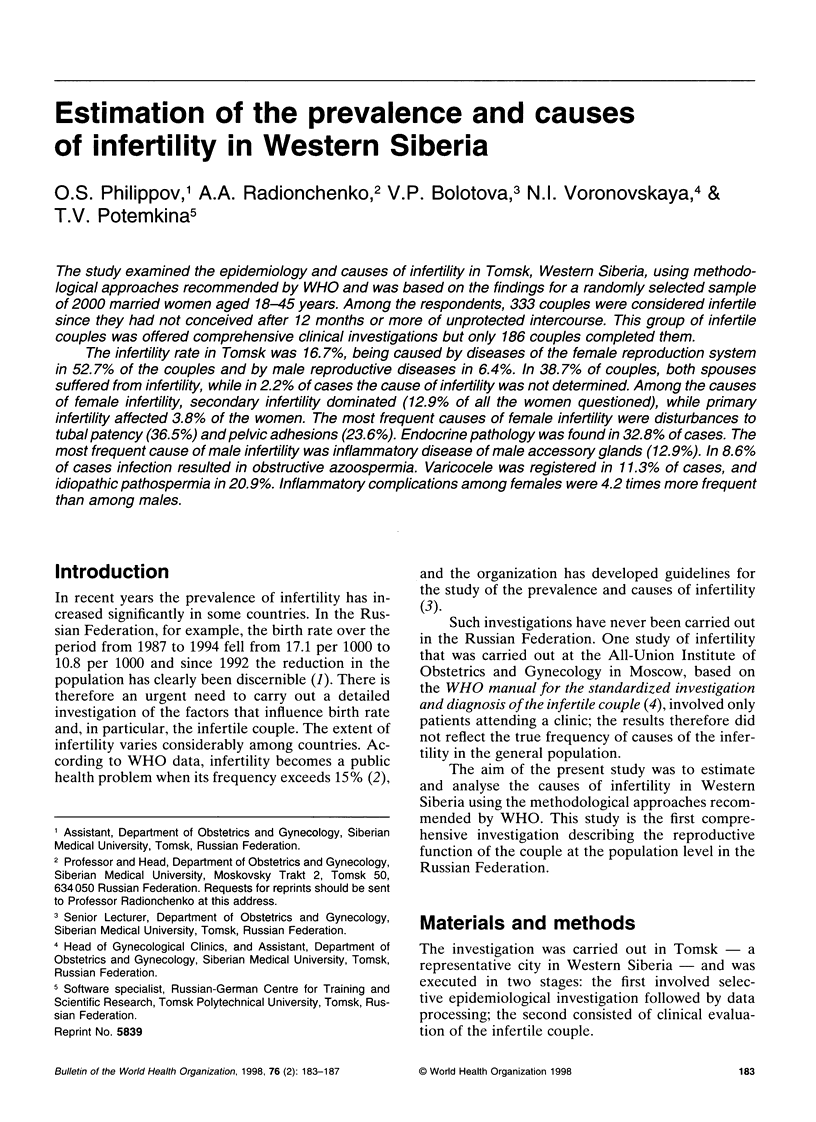
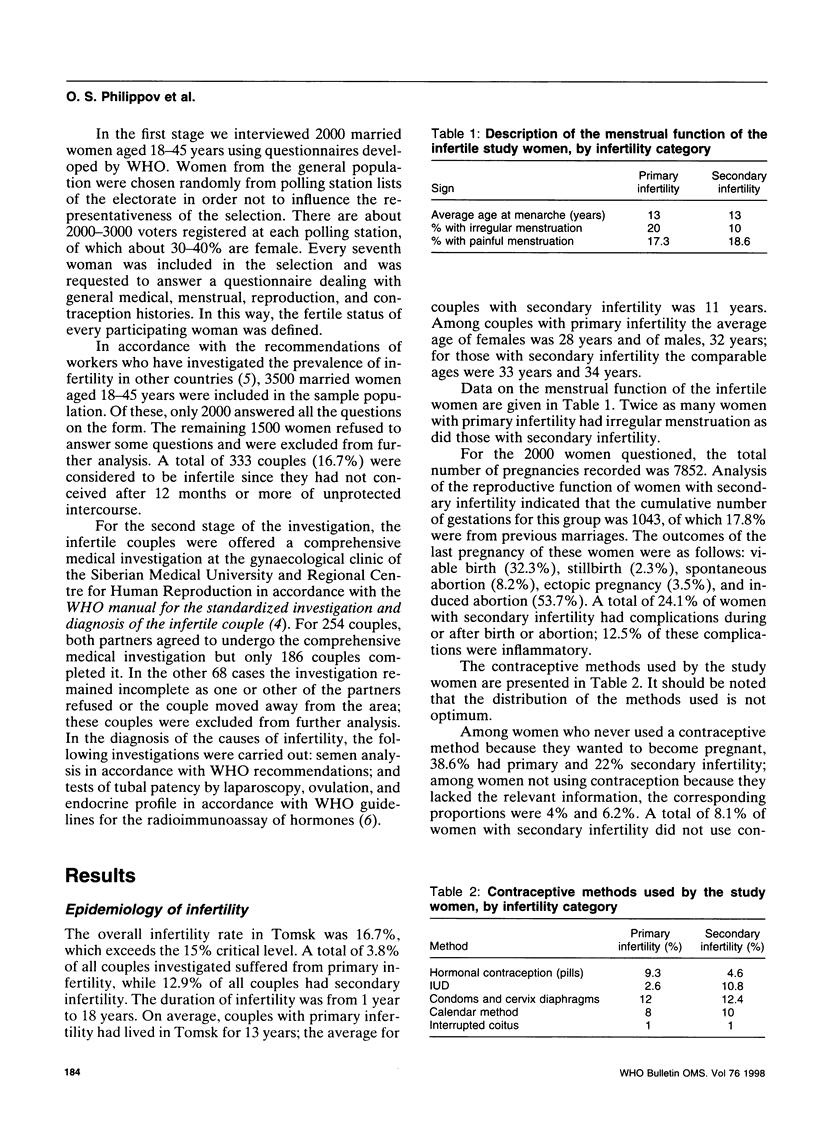
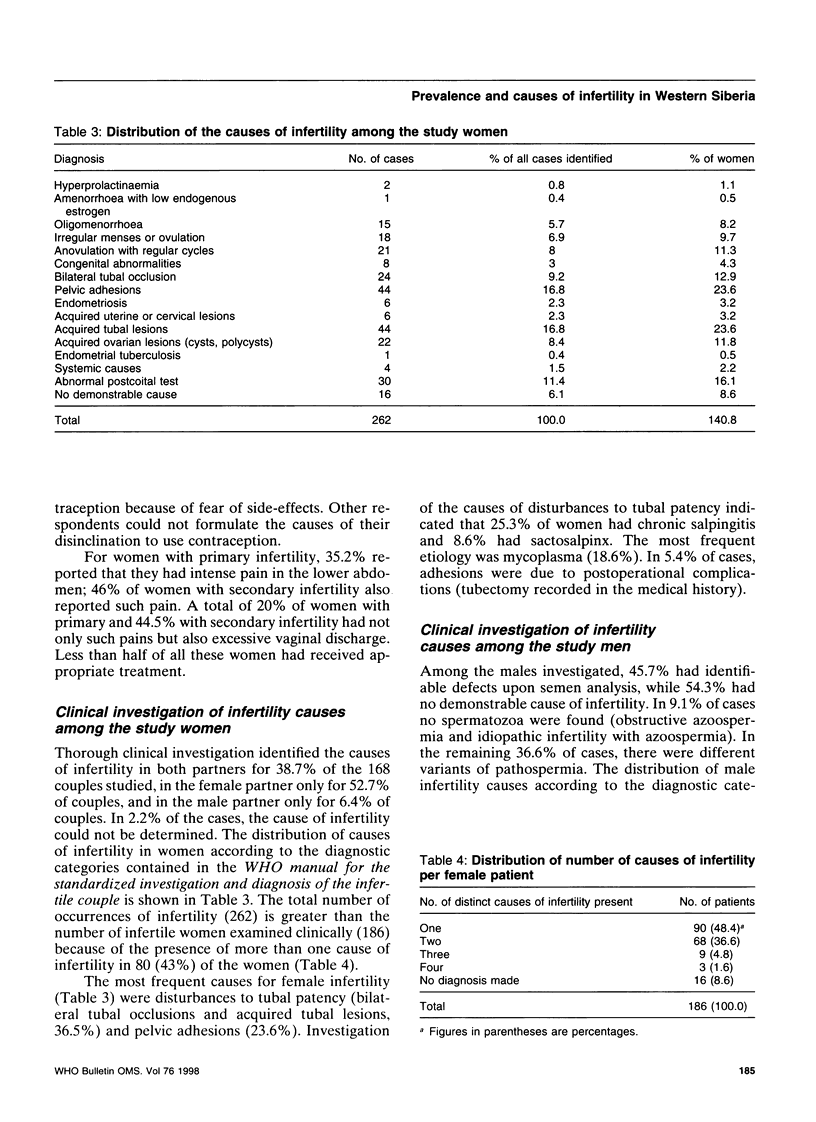
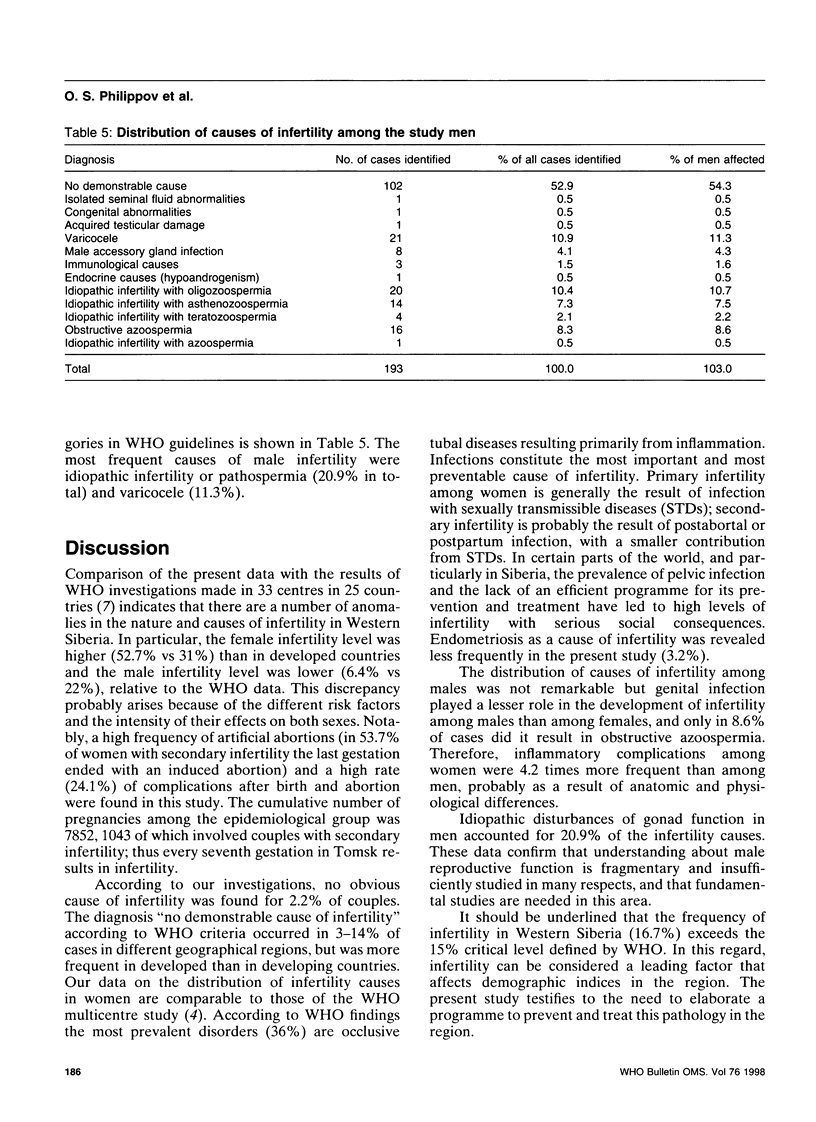
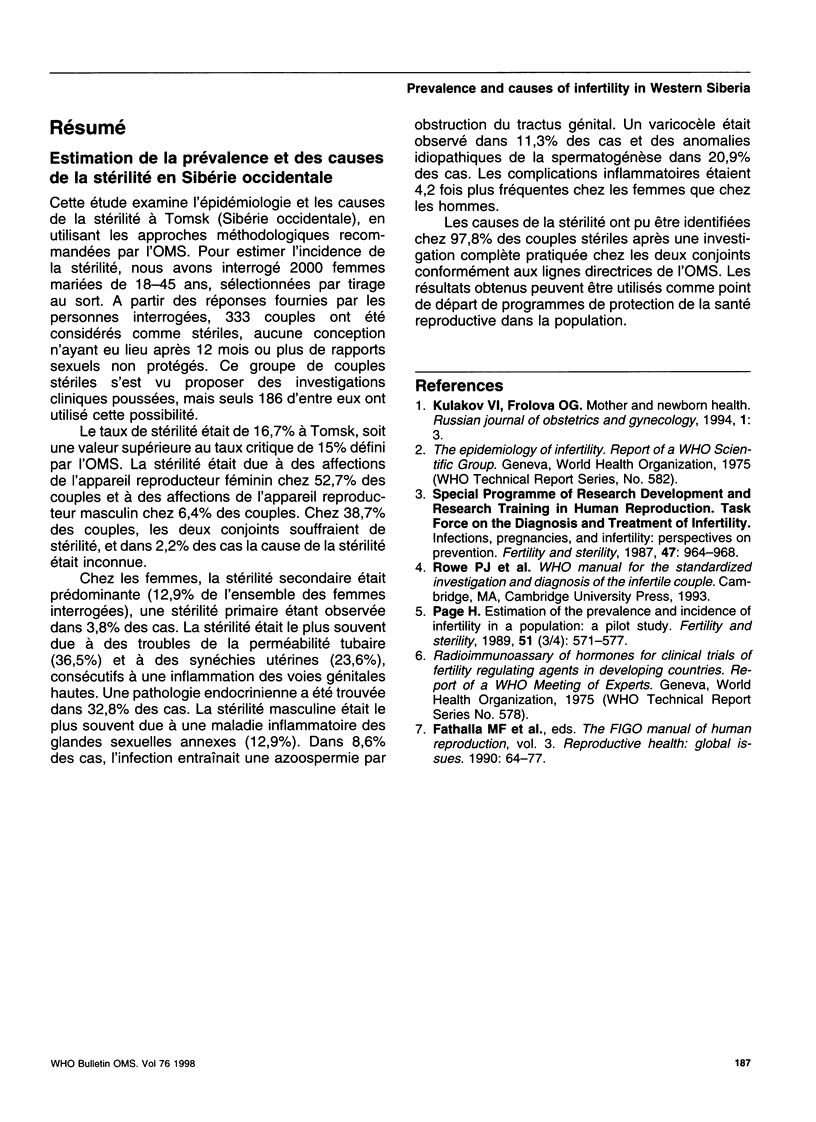
Selected References
These references are in PubMed. This may not be the complete list of references from this article.
- Page H. Estimation of the prevalence and incidence of infertility in a population: a pilot study. Fertil Steril. 1989 Apr;51(4):571–577. doi: 10.1016/s0015-0282(16)60601-5. [DOI] [PubMed] [Google Scholar]


